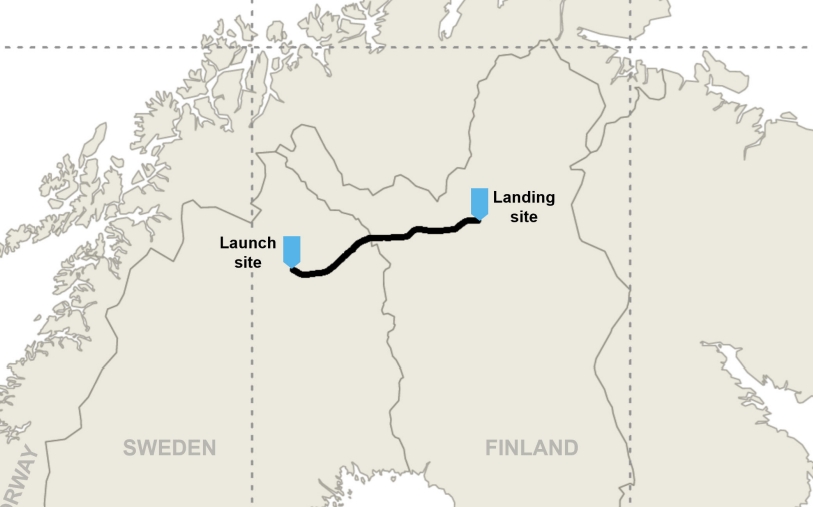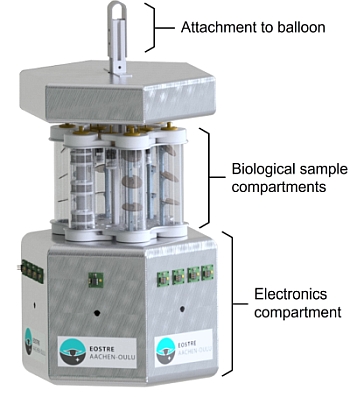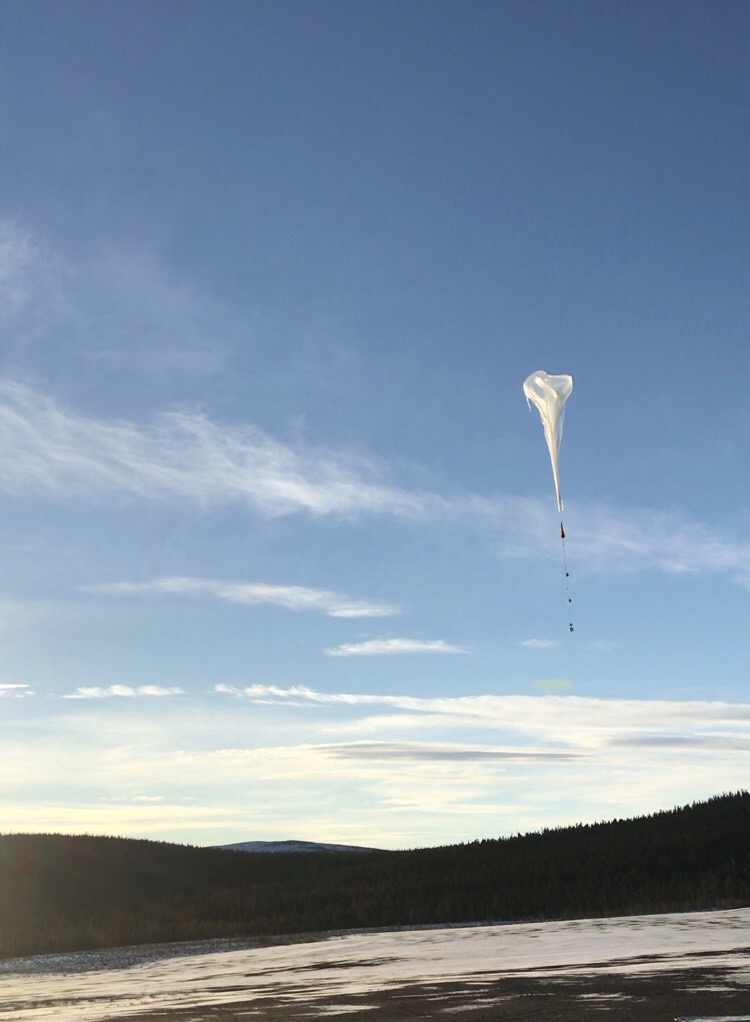Purpose of the flight and payload description
The EOSTRE project (Experiment on Outliving microorganisms under STRatospheric Environment) goal was to test the influence of the extreme conditions in the stratosphere on microorganisms and their survival as well as on possible mutagenic effects of the strong radiation. A sample gondola was built with inclined sample holders that allowed exposure of endospores and known extremophilic microorganisms to radiation at different intensities. Moreover, three environmental samples (soil and sediment) were placed in the sample gondola to test the effect of stratospheric conditions on complex microbial communities.
The sample gondola was attached to a stratospheric balloon which was launched from ESRANGE base near Kiruna, Sweden, on November 3rd, 2020. The balloon ascended to a height of approximately 25 km and left to drift eastwards for 1.5 h (covering a distance of approximately 200 km) after which the balloon was capped to initiate descent near Pokka, Finland. During the flight, the samples were exposed to pressures as low as 2 kPa and temperatures as low as -50ºC as well as high UV radiation. First experiments have been started with the environmental samples as well as with the pure cultures. For the environmental samples, the effect of stratospheric conditions was assessed by Most Probable Number (MPN) counts of aerobic and anaerobic heterotrophs and arsenic-tolerating microorganisms as well as by substrate-utilization tests. Based on the first results, the microbial communities in the three environmental samples reacted differently to the stratospheric conditions.
Cultivation was possible from all three samples, indicating that at least part of the microbial community had survived. Compared to controls, for two of the samples that had been to the stratosphere MPN counts of approximately one to two orders of magnitude lower were obtained, while similar MPN counts were obtained for the third sample. This indicates that the survival rate of culturable microorganisms was at least ~1% for all tested environmental samples. This rather high survival rate might have been caused by the sample matrix which helped to protect the microorganisms from radiation and desiccation during the flight to a certain degree.
Live stream of the launch
Details of the balloon flight

Balloon launched on: 11/3/2020 at 9:25 utc
Launch site: European Space Range, Kiruna, Sweden
Balloon launched by: Swedish Space Corporation (SSC)
Balloon manufacturer/size/composition: Zero Pressure Balloon
Flight identification number: SSC Flt Nº 653
End of flight (L for landing time, W for last contact, otherwise termination time): 11/3/2020
Balloon flight duration (F: time at float only, otherwise total flight time in d:days / h:hours or m:minutes - ): ~ 4 h
Landing site: Near Pokka, Finland
External references
- Balloon operations at Esrange Space Center since the last ISTS 33th International Symposium on Space Technology and Science, 2022
- Flying microbes-survival in the extreme conditions of the stratosphere during a stratospheric balloon flight experiment Microbiol Spectr 0:e03982-23.
- Website of the EOSTRE experiment
15538If you consider this website interesting or useful, you can help me to keep it up and running with a small donation to cover the operational costs. Just the equivalent of the price of a cup of coffee helps a lot.



